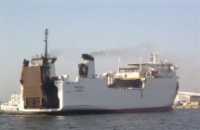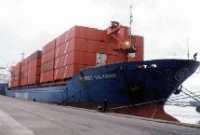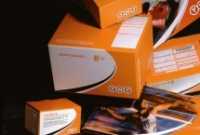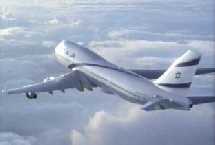The airline posted a net loss of US$13.6 million for the first quarter, compared with a loss of US$9 million for the corresponding quarter of 2006
Prof. Israel (Izy) Borovich, Chairman of the Board of El Al Israel Airlines, and Haim Romano, Company President, presented last week the company's financial report for the first quarter of 2007.
The airline posted a net loss of US$13.6 million for the first quarter, compared with a loss of US$9 million for the corresponding quarter of 2006. El Al’s revenue rose 4%, compared with the corresponding quarter, to $389 million.
Romano noted that the "company had to face the huge increase in seats offered by foreign carriers, while as to expenditure, we faced the continued increases in production input, and first and foremost fuel - the company's main production expense”.
He added that foreign carriers, mostly European, have sharply boosted capacity on routes to Tel Aviv, while Delta Air Lines began offering non-stop daily flights to and from Atlanta to compete with El Al's lucrative US business. Jet fuel costs totaled US$114.6 million for the first quarter, 17% more than the US$98 million cost for the corresponding quarter. Jet fuel added up to 29.5% of the airline’s first quarter turnover, compared with 26.3% of turnover for the corresponding quarter.
Most of the increase in El Al’s operating costs was due to the dollar’s depreciation against the euro and shekel, which increased the airline’s dollar-denominated salary and other expenses, as well as severance pay.
Despite the increase in the average revenue per passenger, cargo revenue fell due to a sharp decline in quantity and lower revenue per ton of cargo carried. During the first quarter the company air lifted 36,000 tons of freight compared to 46,000 in the parallel, a drop of 16%.
El Al: greater Q1 loss despite higher revenue
The airline posted a net loss of US$13.6 million for the first quarter, compared with a loss of US$9 million for the corresponding quarter of 2006
04.06.07 / 00:00
•
More articles that may interest you

Rosenfeld improving RoRo services to & from Greece and Cyprus

UNECE to have the first ever meeting in Israel

Turkon offers upgraded service to and from Egypt

TNT Express inaugurates an upgraded service to the USA

Amital to represent ZOCA Container Security BV in Israel

Sharon: Tax Authority has neglected the Customs Directorate
More news from Air Transport Section
>Government decided to subsidize El Al, Arkia flights to Amman and Cairo/14.05.07
>El Al agreed to lease 6 – 7 planes from Boeing/07.05.07
>A new home preflight check in service launched by El Al/30.04.07
>Transport Min. committee recommends "Open Skies" policy/23.04.07
>El Al's board authorized management to apply streamlining measures/23.04.07
>Delta will commence non-stop flights NY-TA on March 2008/23.04.07
>Airbus marks first breakthrough in the Israeli market with Israir A320 order/23.04.07
>Israel Air Force nearly shoots down suspicious Continental Airlines flight/16.04.07
>Air freight: share of Israeli airlines' cargo market declines/16.04.07
>Israel Airports Authority: El Al planes were the worst noise polluters in 2006/16.04.07
